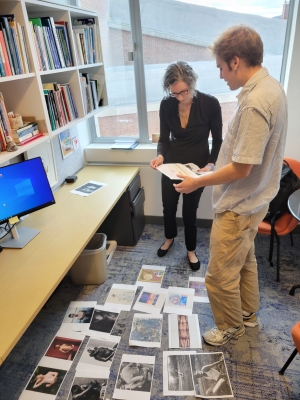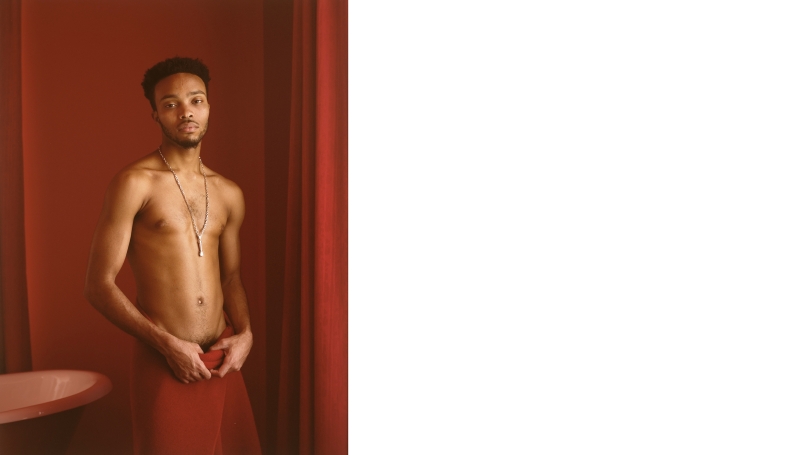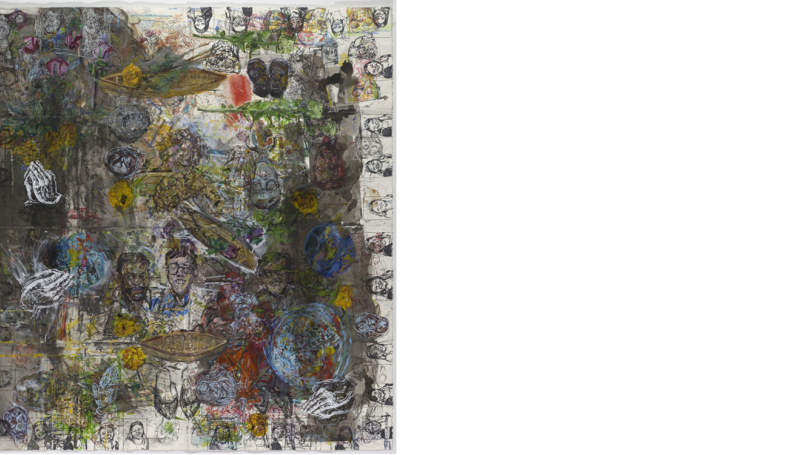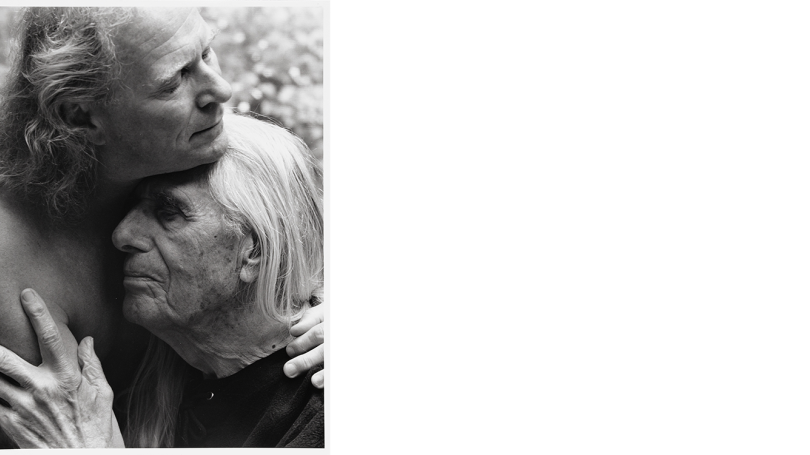AMELIA KAHL, Barbara C. and Harvey P. Hood 1918 Curator of Academic Programming
NEELY MCNULTY, Hood Foundation Curator of Education
Hood Quarterly, summer 2024
Throughout the year, a gallery is set aside for student expression—a chance for Dartmouth students to dive into the museum's collection for the purpose of making their own connections and coming to their own conclusions. This work culminates in the student-curated exhibitions comprising the series A Space for Dialogue. Working with Hood Museum staff, interns determine a theme and identify objects, help design their installation, write labels and a brochure, and deliver a gallery talk to their friends and the broader community. The series started in 2001, and Colin Donnelly '24, Class of 1954 programming intern, is curating the 119th exhibition. Recently, Colin sat down with his supervisors, Amelia Kahl and Neely McNulty, to discuss his experience planning his SFD installation this year. Here are the highlights from that conversation.
20231027_150723.jpg

Q: Your exhibition is titled Embracing Vulnerability: Gay Intimacy in the Context of AIDS. What do you want people to understand about gay intimacy?
Colin: I wanted to choose works of art that feel very warm and very natural, that reflect everyday scenes of love and care. I feel like intimacy is born from love and care. I chose the context of AIDS because it is a still a difficult history that lives on for all queer people, especially when you consider the scale of generational loss in the 1980s and 1990s. At that time, depictions of intimacy were pathologized and seen as disease-spreading and undesirable.
As a queer person in such a small, remote school like Dartmouth, it can feel difficult to find a vibrant queer community on this campus. After conversations with my queer friends here, I thought it would be important to put queer art on display from the Hood's collection that had never been exhibited. I wanted to choose images that are affirming and warm for queer people, to choose depictions of intimacy that feel both universal but distinctly queer. The Hood Museum has the potential to be a place for queer people to find solace at Dartmouth.
Q: Initially, your topic was much broader. How did you winnow it down to this set of ideas in particular?
Colin: I knew I wanted to explore queer art. Coming from a social science background as a geography major, I got caught up in a lot of theory, trying to come up with the perfect idea for an exhibition backed by theory. A major turning point was a meeting with Neely when she suggested I think about this from a personal perspective rather than a theoretical one. The conversation caused me to turn inward. It made me think about the fact that, just because I am telling one story that is personal to me, it doesn't mean that it can't be enjoyed by a variety of people from different backgrounds. I really thought about how I have this opportunity; now what am I going to do with it?
Q: What was it like to share these ideas with an audience primarily through works of art rather than prose?
Colin: There is this way that art can interact with its audience that is different from something written. The images I chose convey a humanity and relatability that can only be expressed through art. And given the heteronormative frameworks in which we live, showing images of queer intimacy can have an impact and show people what intimacy can be.
Q: How did you bring your other experiences as a Dartmouth student to this project?
Colin: At the start of exhibition planning, I was taking a senior seminar about the politics of death and dying. I really couldn't shake how what I learned in that class related to the queer experience. I already knew about the AIDS epidemic in the United States and the lack of a state response to the health crisis. It can get very theoretical, but it was valuable practice to take what I learned and strip it to its core and think about my own experience.
Q: Anything else you'd like to share about this process?
Colin: You have to spend time with the works. In researching and writing the labels, I created this close connection with each artwork, especially given the conversations I was able to have with some of the contemporary artists. I learned how meaningful it is to talk directly with artist—the artists Daniel Heyman and Judy Glantzman being the most memorable. They have such vast knowledge, and now I have these lasting relationships. And because art has a way of infiltrating all subjects, I know I'll be taking this experience directly into my geography thesis, "Creation as Resistance: Producing Urban Queer Space in NYC through Radical Art Practice."
You can experience Colin's exhibition for yourself this July.
Embracing Vulnerability: Gay Intimacy in the Context of AIDS is on view July 13–September 1, 2024.
A Space for Dialogue: Fresh Perspectives on the Permanent Collection from Dartmouth's Students, founded with the support from the Class of 1948, is made possible with generous endowments from the Class of 1967, Bonnie and Richard Reiss Jr. '66, and Pamela J. Joyner '79.


